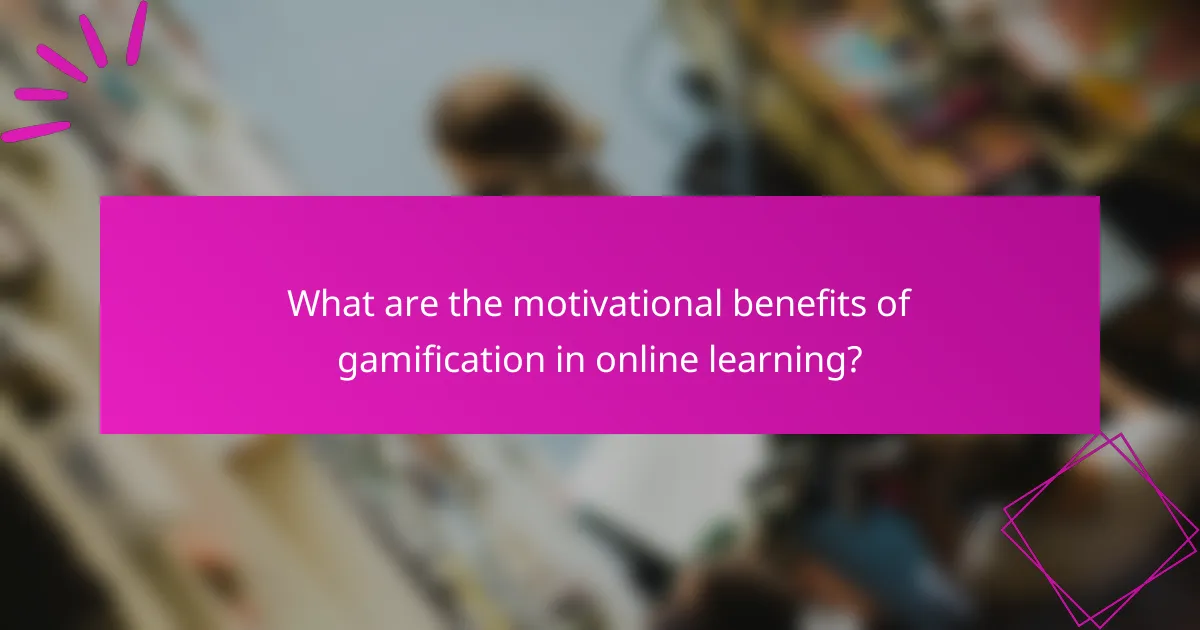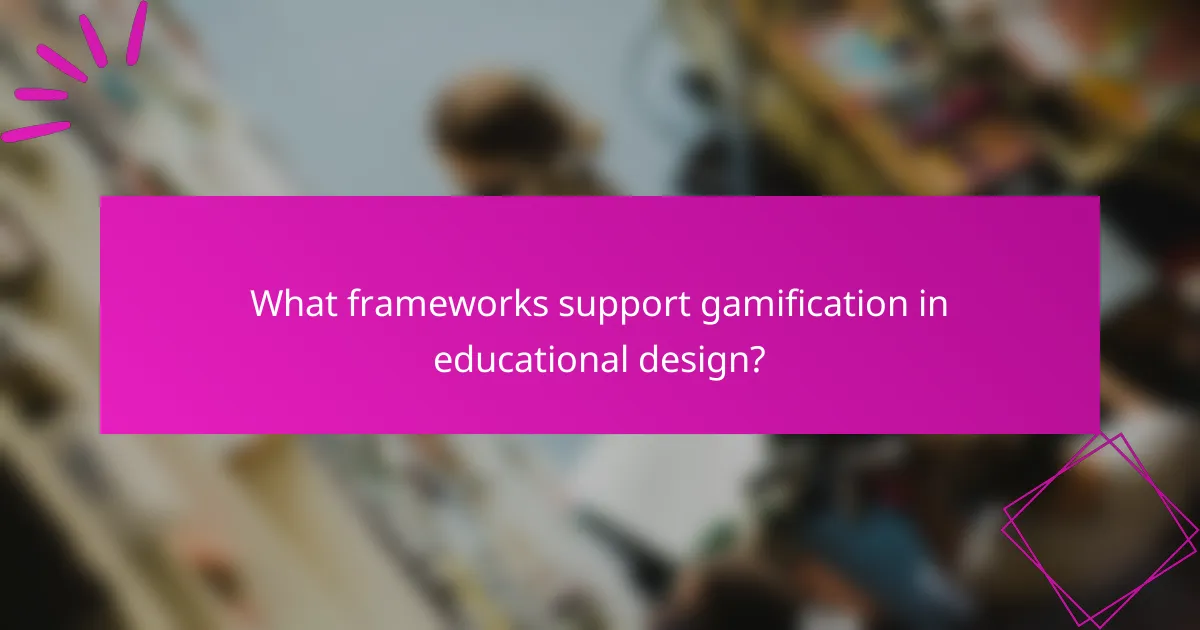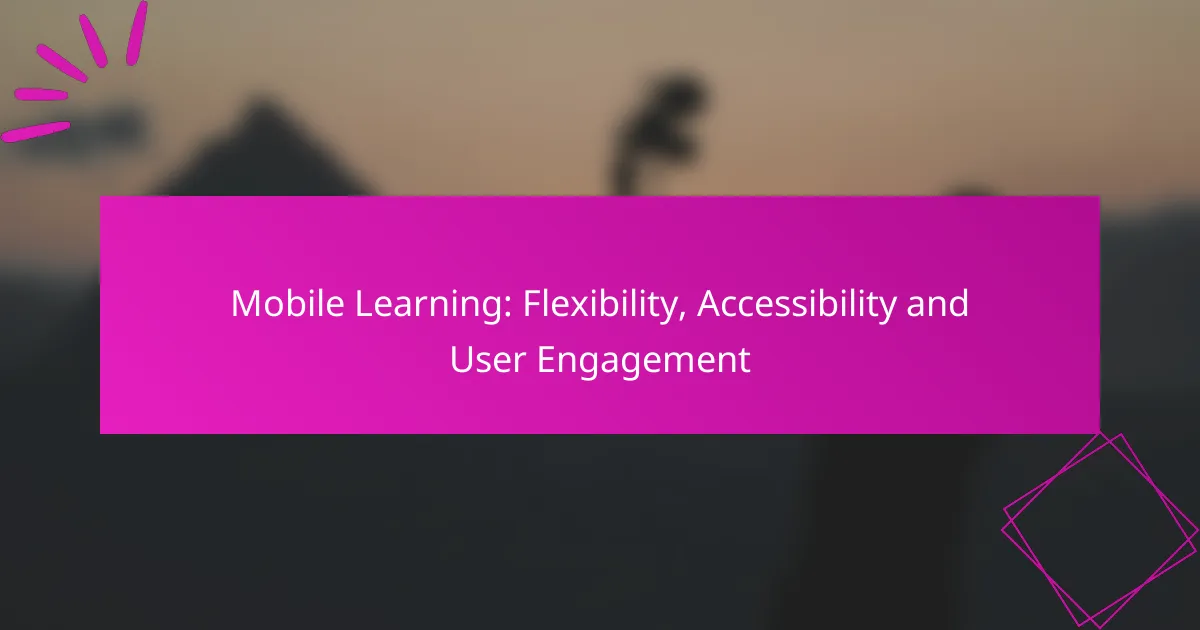Gamification in digital courses transforms the learning experience by integrating game-like elements that boost engagement and motivation. This innovative approach not only makes learning more enjoyable but also enhances retention and understanding of the material, ultimately leading to improved learning outcomes. By fostering a sense of achievement through features like points and badges, learners are encouraged to participate actively and pursue personal growth.

How does gamification enhance engagement in digital courses?
Gamification enhances engagement in digital courses by incorporating game-like elements that motivate learners to participate actively. This approach fosters a more interactive and enjoyable learning environment, which can lead to improved retention and understanding of the material.
Increased interactivity
Increased interactivity in gamified courses allows learners to engage with content through quizzes, simulations, and interactive scenarios. These elements encourage active participation rather than passive consumption, making the learning experience more dynamic.
For example, incorporating points, badges, or leaderboards can motivate students to complete tasks and participate in discussions. This competitive aspect can drive engagement and encourage learners to achieve their goals.
Real-time feedback
Real-time feedback is a crucial component of gamification, providing learners with immediate insights into their performance. This instant response helps students understand their strengths and areas for improvement, allowing them to adjust their learning strategies accordingly.
For instance, a digital course might include instant scoring on quizzes or interactive exercises, enabling learners to see how they rank against their peers. This feedback loop can significantly enhance motivation and encourage continuous improvement.
Social collaboration
Social collaboration in gamified courses promotes teamwork and peer interaction, which can enhance the learning experience. By working together on challenges or projects, learners can share knowledge and support each other, fostering a sense of community.
Incorporating features like discussion forums, group challenges, or collaborative projects can facilitate social learning. This not only makes the course more engaging but also helps learners develop essential communication and teamwork skills that are valuable in real-world scenarios.

What are the motivational benefits of gamification in online learning?
Gamification in online learning enhances motivation by integrating game-like elements that engage learners and encourage active participation. It fosters a sense of achievement and personal growth, ultimately leading to improved learning outcomes.
Intrinsic motivation boost
Gamification significantly boosts intrinsic motivation by making learning enjoyable and rewarding. Elements such as challenges, badges, and leaderboards create a playful environment that encourages learners to explore and master new skills. This enjoyment can lead to a deeper commitment to the learning process.
For example, incorporating quizzes with instant feedback can make learners feel accomplished and eager to tackle more complex topics. When learners see their progress visually represented, they are more likely to stay engaged and motivated.
Goal achievement recognition
Recognizing goal achievement is a key benefit of gamification, as it reinforces learners’ sense of progress. By setting clear, attainable goals and providing immediate rewards upon completion, learners feel validated in their efforts. This recognition can take the form of digital badges, certificates, or points that can be tracked over time.
For instance, a course might offer a badge for completing a module or a leaderboard ranking for top performers, which can spur friendly competition and motivate learners to strive for excellence.
Personalized learning paths
Gamification allows for the creation of personalized learning paths that cater to individual learners’ needs and preferences. By adapting challenges and content based on performance, learners can progress at their own pace, ensuring that they remain engaged without feeling overwhelmed.
For example, a platform might offer different levels of difficulty for quizzes based on previous scores, allowing learners to choose challenges that suit their skill level. This tailored approach not only enhances motivation but also improves overall learning outcomes by addressing diverse learning styles.

How does gamification impact learning outcomes in Canadian digital courses?
Gamification significantly enhances learning outcomes in Canadian digital courses by increasing student engagement and motivation. By incorporating game-like elements such as points, badges, and leaderboards, learners are more likely to participate actively and retain information effectively.
Improved retention rates
Gamification can lead to improved retention rates by making learning more interactive and enjoyable. When students are engaged through rewards and challenges, they are more likely to remember the material. For instance, incorporating quizzes with immediate feedback can reinforce knowledge and help solidify concepts.
In Canadian digital courses, using gamified elements like progress tracking can encourage learners to revisit content, which further enhances retention. Studies suggest that gamified learning experiences can boost retention rates by 20-30% compared to traditional methods.
Higher completion rates
Higher completion rates are another benefit of gamification in digital courses. When learners are motivated by rewards and a sense of achievement, they are more likely to finish their courses. For example, offering badges for completing modules can encourage students to progress through the curriculum.
In Canada, where online course completion can be challenging, gamification strategies can help maintain student interest. Research indicates that courses with gamified elements often see completion rates increase by 30-50%, making them a valuable tool for educators.
Enhanced critical thinking skills
Gamification can enhance critical thinking skills by presenting learners with complex problems that require strategic thinking. Through game scenarios and simulations, students must analyze situations, make decisions, and evaluate outcomes, which fosters deeper cognitive engagement.
In Canadian digital courses, incorporating case studies or role-playing games can provide practical applications of theoretical knowledge. This approach not only promotes critical thinking but also prepares students for real-world challenges they may face in their careers.

What frameworks support gamification in educational design?
Several frameworks provide a structured approach to integrating gamification into educational design, enhancing engagement and motivation. These frameworks help educators understand how to apply game mechanics effectively to improve learning outcomes.
Octalysis Framework
The Octalysis Framework, developed by Yu-kai Chou, focuses on eight core drives that motivate human behavior. These drives include elements like achievement, empowerment, and social influence, which can be leveraged to create engaging learning experiences.
When applying the Octalysis Framework, educators should identify which core drives resonate with their learners. For example, incorporating leaderboards can tap into the achievement drive, while collaborative projects can enhance social influence. Balancing these drives is crucial to maintain learner motivation.
Fogg Behavior Model
The Fogg Behavior Model emphasizes the relationship between motivation, ability, and prompts in influencing behavior. According to this model, for a behavior to occur, a person must be sufficiently motivated, have the ability to perform the behavior, and be prompted to do so at the right moment.
In educational settings, this means that gamification elements should be designed to increase motivation while ensuring that tasks are manageable for learners. For instance, providing clear instructions and timely feedback can enhance a learner’s ability to engage with gamified content. Educators should regularly assess these factors to optimize the learning experience.

What tools are available for implementing gamification?
Several tools can effectively implement gamification in digital courses, enhancing engagement and motivation. These platforms provide various features to incorporate game-like elements into learning experiences.
Moodle
Moodle is a widely-used learning management system (LMS) that supports gamification through plugins and built-in features. Educators can create badges, leaderboards, and activity completion tracking to motivate learners. For example, awarding badges for completing modules can encourage students to progress through the course.
When using Moodle, consider the balance between gamification and educational content. Overemphasis on game elements may distract from learning objectives. Regularly assess student feedback to refine your approach and ensure that gamification enhances rather than detracts from the learning experience.
Kahoot!
Kahoot! is an interactive quiz platform that allows educators to create engaging quizzes and games for their students. It promotes competition and collaboration, making learning fun and dynamic. Teachers can use Kahoot! for formative assessments or as a review tool, with real-time feedback to keep students engaged.
To maximize the effectiveness of Kahoot!, ensure that quizzes are aligned with learning goals and provide a mix of question types. Avoid overly complex questions that may confuse participants. Aim for a balance of challenge and accessibility to maintain high engagement levels.
Classcraft
Classcraft is a unique platform that gamifies the classroom experience by turning learning into a role-playing game. Students create characters and earn points for positive behaviors, participation, and collaboration. This approach fosters a sense of community and encourages students to support each other in their learning journeys.
When implementing Classcraft, set clear expectations for behavior and participation to ensure that students understand how to earn points. Regularly review the game mechanics and adjust them based on student engagement and feedback. This adaptability can help maintain motivation and interest throughout the course.

How can educators measure the effectiveness of gamification?
Educators can measure the effectiveness of gamification through various methods that assess engagement, learning outcomes, and student feedback. These methods provide insights into how well gamified elements are enhancing the educational experience and achieving learning objectives.
Engagement metrics
Engagement metrics track how actively students participate in gamified courses. Key indicators include time spent on tasks, completion rates, and interaction frequency with gamified elements like quizzes and leaderboards. For example, a course might aim for at least 70% of students to complete all gamified activities.
Tools such as Learning Management Systems (LMS) can provide detailed analytics on these metrics, allowing educators to identify trends and areas for improvement. Regularly reviewing these metrics helps in adjusting gamification strategies to better meet student needs.
Learning analytics
Learning analytics involve analyzing data collected from students’ interactions with course materials to assess their understanding and progress. This can include tracking quiz scores, assignment submissions, and overall performance trends. For instance, educators can compare pre- and post-gamification test scores to evaluate knowledge retention.
By utilizing analytics dashboards, educators can visualize data patterns and make informed decisions about instructional adjustments. Identifying students who struggle with specific gamified tasks can lead to targeted interventions, enhancing overall learning outcomes.
Feedback surveys
Feedback surveys gather direct input from students regarding their experiences with gamification. These surveys can include questions about motivation, enjoyment, and perceived learning benefits. A simple Likert scale can help quantify responses, making it easier to analyze trends across different cohorts.
Incorporating open-ended questions allows students to express their thoughts in detail, providing qualitative insights that numbers alone cannot capture. Regularly administering these surveys, perhaps at the end of each module, ensures that educators can continuously refine their gamification strategies based on student feedback.

What are the challenges of gamification in digital courses?
Gamification in digital courses faces several challenges that can hinder its effectiveness. Key issues include balancing engagement with educational value, ensuring accessibility for all learners, and avoiding over-reliance on rewards that may diminish intrinsic motivation.
Balancing engagement and educational value
One major challenge is finding the right balance between keeping learners engaged and delivering meaningful educational content. Gamification elements, such as points and badges, can sometimes distract from the core learning objectives. It’s essential to integrate these elements in a way that enhances rather than overshadows the educational material.
To achieve this balance, course designers should align gamification strategies with learning outcomes. For instance, using quizzes as a game element can reinforce knowledge while maintaining student interest. Regular feedback on performance can also help keep learners focused on their educational goals.
Ensuring accessibility for all learners
Accessibility is another significant challenge in gamification. Not all learners have the same abilities or access to technology, which can create disparities in engagement and learning outcomes. It’s crucial to design gamified elements that are inclusive and cater to diverse learning needs.
For example, providing alternative ways to earn rewards or complete challenges can help accommodate different learning styles and abilities. Offering text-to-speech options or simplified interfaces can also enhance accessibility for learners with disabilities.
Avoiding over-reliance on rewards
Over-reliance on external rewards can diminish intrinsic motivation, making it a challenge for gamified courses. When learners focus too much on earning points or badges, they may lose sight of the actual learning process. This can lead to superficial engagement rather than deep understanding.
To mitigate this risk, course developers should emphasize intrinsic rewards, such as personal growth and mastery of skills. Incorporating self-reflection opportunities and encouraging collaboration among learners can foster a more meaningful learning experience that goes beyond mere gamification.



